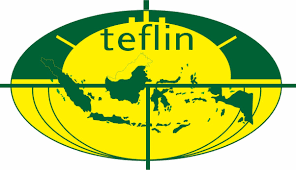STRATEGIES OF READING SKILLS FOR ENGLISH LANGUAGE CLASS
DOI:
https://doi.org/10.31851/esteem.v2i1.3470Abstract
Abstract
Â
The researchers had found that learning reading strategies is a key element in developing student comprehension. However, many teachers lack a solid foundation for teaching these reading comprehension strategies. Therefore, teachers need to be prepared on how to design effective reading comprehension strategies and how to teach these strategies to their students. Therefore this study aims to study the effective reading strategies in order to improve reading skills in language classes. The study is an action research applied to a number of 15 students in an intermediate level integrated skills course. The main question of the study is “Would reading strategies help my students’ reading comprehension studies?â€. The result od the study indicate that the students had an improvement to a great extend have been tutored about the reading strategies.
Â
Keyword: reading strategies, predicting, visualizing, inferring, making connections, questioning, action researchReferences
Adler, C. R. (Ed.). (2001). Put reading first: The research building blocks for teaching children to read. Jessup, MD: ED Pubs.
Anderson, R., Hiebert, E., Scott, J., & Wilkinson, I. (1985).Becoming a nation of readers: The report of the commission on reading. Washington, DC: National Institute of Education and the Center for the Study of Reading.
Block, C. & Israel, S. (2005). Reading first and beyond: The complete guide for teachers and literacy coaches. Thousand Oaks, CA: Corwin Press.
Brown, A., & Dowling, P. (2001).Doing research/reading research: A mode of interrogation for teaching. London, England: Routledge Falmer.
Corey, S. M. (1953). Action research to improve school practices. New York, NY: Teachers College Press.
Duke, N. K. & Pearson, (2005).Effective practices for developing reading comprehension. Retrieved from http://www.ctap4.org/ infolit/trainers/comprehe_strategies.pdf
Harvey, S., & Goudvis, A. (2000).Strategies that work teaching comprehension to enhance understanding. York, ME: Stenhouse Publishers.
Jaya, A. (2017). The influence of the Teachers’ Questioning Strategies on the Eleventh Grade Students’ Speaking Achievemnet at SMKN 1 Palembang. Jambi-Engliah Langugae Teaching. 2 (1).
Kose, N. (2006). Effects of portfolio implementation and assessment critical reading on learner autonomy of EFL students. Retrieved from http://www.belgeler.com/blg/12ta/effects-of-portfolio-implementation- and- assessment- on-critical-reading-and-learner-autonomy-of-elt-students
National Reading Panel. (2000). Comprehension III teacher preparation and comprehension strategies instruction. (Chap.4). Retrieved from http://www.nichd.nih.gov/publications/nrplch4-111.pdf
Oczkus, L. D. (2003). Reciprocal teaching at work strategies for improving reading comprehension. Newark, DE: International Reading Association.
Serafini, F. (2004). Lessons in comprehension explicit instruction in the reading workshop. Portsmouth, NH: Heinemann.
McNiff, J. (1988). Action research: principles and practice. London, England: Routledge.
Teele, S. (2004).Overcoming barricades to reading a multiple intelligences approach.
Thousand Oaks, CA: Corwin Press.
Downloads
Published
Issue
Section
License
Copyright Notice
Authors who publish with this journal agree to the following terms:
In order to assure the highest standards for published articles, a peer review policy is applied. In pursue of the compliance with academic standards, all parties involved in the publishing process (the authors, the editors and the editorial board and the reviewers) agree to meet the responsibilities stated below in accordance to the Journal publication ethics and malpractice statement.
Duties of Authors:
- The author(s) warrant that the submitted article is an original work, which has not been previously published, and that they have obtained an agreement from any co-author(s) prior to the manuscript’s submission;
- The author(s) should not submit articles describing essentially the same research to more than one journal;
- The authors(s) make certain that the manuscript meets the terms of the Manuscript Submission Guideline regarding appropriate academic citation and that no copyright infringement occurs;
- The authors(s) should inform the editors about any conflict of interests and report any errors they subsequently, discover in their manuscript.
Duties of Editors and the Editorial Board:
- The editors, together with the editorial board, are responsible for deciding upon the publication or rejection of the submitted manuscripts based only on their originality, significance, and relevance to the domains of the journal;
- The editors evaluate the manuscripts compliance with academic criteria, the domains of the journal and the guidelines;
- The editors must at all times respect the confidentiality of any information pertaining to the submitted manuscripts;
- The editors assign the review of each manuscript to two reviewers chosen according to their domains of expertise. The editors must take into account any conflict of interest reported by the authors and the reviewers.
- The editors must ensure that the comments and recommendations of the reviewers are sent to the author(s) in due time and that the manuscripts are returned to the editors, who take the final decision to publish them or not.
Authors are permitted and encouraged to post online a pre-publication manuscript (but not the Publisher final formatted PDF version of the Work) in institutional repositories or on their Websites prior to and during the submission process, as it can lead to productive exchanges, as well as earlier and greater citation of published work (see The Effect of Open Access). Any such posting made before acceptance and publication of the Work shall be updated upon publication to include a reference to the Publisher-assigned DOI (Digital Object Identifier) and a link to the online abstract for the final published Work in the Journal.





























